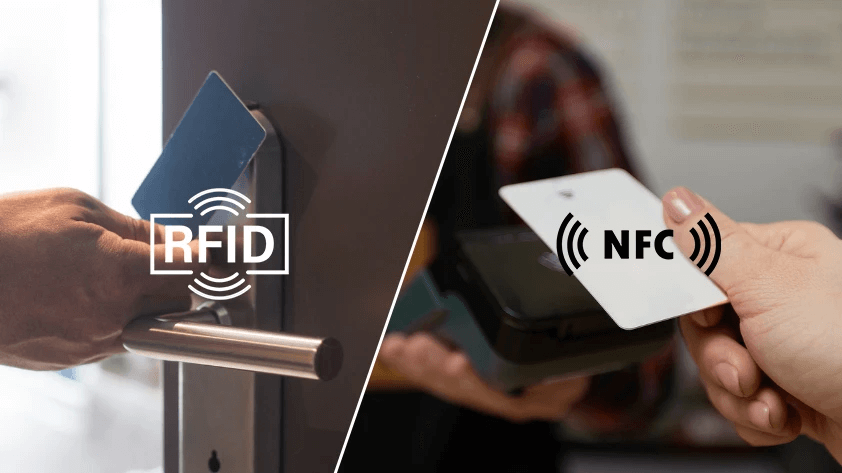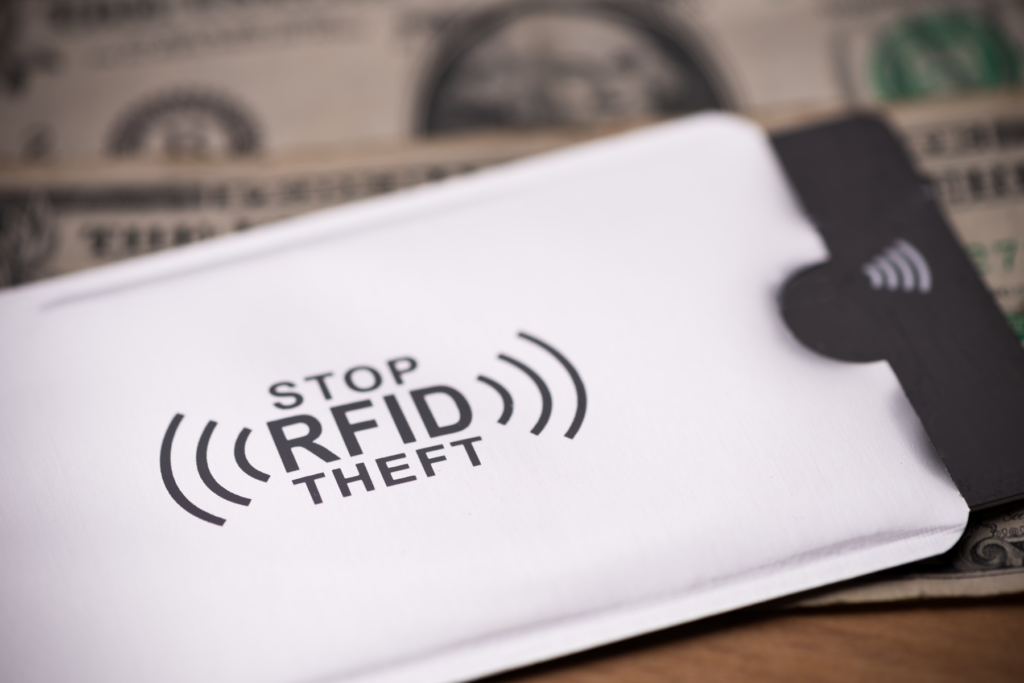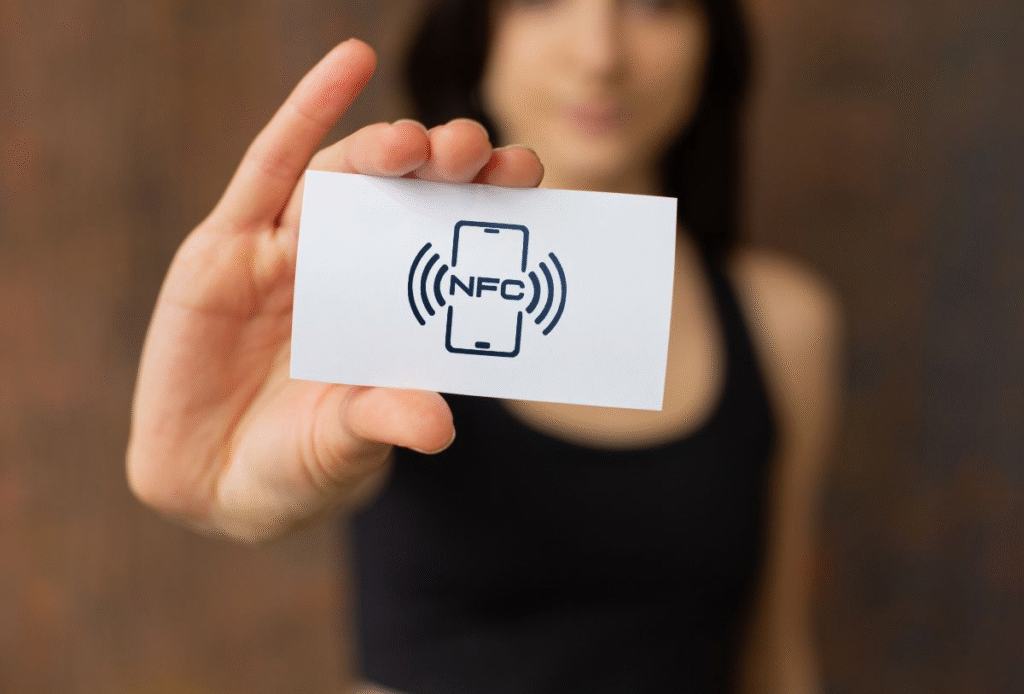
Key Differences Between RFID Card and NFC Card Explained Clearly?
RFID cards and NFC card is often confused, but they serve distinctly different roles within the technology ecosystem. While both use radio waves for data transmission, an RFID card is designed for tracking, automation, and identification over varying distances. NFC cards, on the other hand, focus on secure, short-range communication, primarily for mobile payments or authentication. I will analyze their differences from multiple perspectives below; reading on will surely be beneficial.
Frequency ranges and communication distance
One of the most notable differences between RFID and NFC lies in their operating frequencies and ranges. RFID functions across three primary frequency bands—low frequency (125 kHz), high frequency (13.56 MHz), and ultra-high frequency (860–960 MHz). The higher the frequency, the longer the potential read range. NFC operates exclusively at 13.56 MHz and requires the card or device to be within 4 centimeters of the reader. This short range makes NFC inherently secure because it reduces the risk of signal interception. RFID can read multiple tags simultaneously from distances of up to 10 meters, making it ideal for logistics, warehouse tracking, and retail inventory management.

How each technology communicates
RFID and NFC use different data transmission methods. RFID tags communicate one-way or, in some advanced models, two-way between a tag and a reader. NFC, however, supports peer-to-peer communication. That means two NFC-enabled devices can exchange data interactively. For example, smartphones can act as both readers and tags, enabling tap-to-pay and device pairing features. RFID tags, especially passive ones, depend entirely on the reader’s signal for power and communication. This difference defines their use cases: RFID for scalability and automation, NFC for interactive and secure exchanges.
Real-world applications across industries
RFID is commonly used in large-scale operations where efficiency and automation are critical. Manufacturers track tools and equipment using RFID tags to minimize losses and prevent theft. Logistics companies attach RFID labels to pallets for real-time visibility of shipments. Retailers employ RFID for anti-theft and stock management. NFC dominates in consumer-facing environments, including transit cards, access control, and mobile payments. A hotel might use NFC key cards for room access, while a bank integrates NFC chips into debit cards for contactless transactions. Both technologies improve convenience but target different operational priorities.

Comparing security levels
Security is another crucial difference. Many basic RFID systems—especially those operating at low frequencies—lack encryption and can be easily cloned if not correctly managed. More advanced RFID solutions, such as MIFARE DESFire or HID iCLASS, utilize AES or 3DES encryption to prevent unauthorized copying and cloning. NFC benefits from its later design, which follows stricter standards, such as ISO/IEC 14443, that enable secure elements and tokenization. This is why payment systems like Apple Pay, Google Pay, and transit networks rely heavily on NFC. For environments dealing with personal or financial data, NFCs’ built-in cryptographic features provide a stronger defense.
Cost considerations and scalability
Cost plays a significant role in determining whether to choose RFID or NFC. Passive RFID tags are extremely inexpensive, sometimes costing less than $0.10 each when produced in large quantities. This affordability allows companies to tag thousands of items without breaking their budget. NFC chips are more expensive because they include additional memory, logic, and encryption capabilities. The cost of infrastructure also varies. RFID requires fixed or handheld readers strategically placed throughout facilities, whereas NFC mainly relies on smartphones or specialized payment terminals. Businesses must evaluate the total cost of ownership, including maintenance and system integration, before making a choice.

Market trends and emerging hybrid solutions
As industries become increasingly digitized, hybrid solutions that combine RFID and NFC capabilities are becoming more prevalent. These multi-technology cards combine the long-range readability of RFID with the secure, close-range interaction of NFC. According to Allied Market Research, the global RFID market was valued at $15.8 billion in 2023 and is projected to exceed $31 billion by 2030. Meanwhile, NFC-based contactless payments continue to grow rapidly, driven by the increasing adoption of smartphones and the growing use of digital wallets. This convergence demonstrates that businesses no longer need to choose between them; hybrid cards and readers can seamlessly cover both operational and customer-facing needs. To better assist you in making your choice, a table comparing RFID cards and NFC cards is provided above. You can use this information to make a comprehensive determination of which card to choose for your project.
| Up to 10 meters, depending on frequency | RFID Card | NFC Card |
|---|---|---|
| Full Name | Radio Frequency Identification Card | Near Field Communication Card |
| Operating Frequency | 125 kHz (LF), 13.56 MHz (HF), 860–960 MHz (UHF) | 13.56 MHz (HF only) |
| Communication Range | Passive (powered by the reader signal) or active (with battery) | Up to 4 centimeters |
| Communication Type | One-way (reader to tag), sometimes two-way | Two-way peer-to-peer communication |
| Power Source | Passive, powered by the reader or device | Mobile payments, smart access cards, public transit, and hotel key cards |
| Read Speed | Can read multiple tags simultaneously | Reads one device at a time |
| Main Applications | Works across long distances, but usually one system type | Asset tracking, warehouse automation, logistics, retail inventory, and access control |
| Security Level | Basic systems may lack encryption; advanced options use AES or 3DES | Built with ISO/IEC 14443 standards, supports tokenization and encryption |
| Cost per Unit | Very low, often under $0.10 for passive tags | Higher due to added logic and encryption |
| Infrastructure Requirements | Requires RFID readers placed throughout the facility | Works with smartphones or NFC terminals |
| Data Storage | Limited memory, suitable for ID and tracking data | More memory for secure user data and app integration |
| Interoperability | Works across long distances but usually one system type | Compatible with most modern smartphones and tablets |
| Ideal Use Case | Industrial automation, logistics, mass tracking | Secure consumer interactions and short-range authentication |
| Future Trend | Expanding use in IoT and hybrid tracking | Growth in digital wallets and smart devices |
How to Choose the Right NFC or RFID Card for Your Business
If your priorities are asset management, cargo tracking, or inventory automation, RFID cards offer greater scalability and coverage. If your focus is on security, authentication, or user convenience, NFC provides more advanced encryption and smartphone compatibility. However, many modern facilities now integrate both technologies into their ecosystems for greater efficiency and enhanced security.


